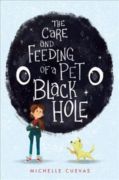
Eleven-year-old Stella Rodriguez finds herself in possession of a strange new pet that swallows up everything in sight when a black hole decides to follow her home.
Historical Fiction genre

Eleven-year-old Stella Rodriguez finds herself in possession of a strange new pet that swallows up everything in sight when a black hole decides to follow her home.
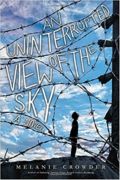
Modern history unearthed as a boy becomes an innocent victim of corruption in Bolivia’s crime world, where the power of family is both a prison and a means of survival.

Caleb has spent his life roaming southern England with his Pa, little to their names but his father’s signet ring and a puppet theater for popular, raunchy Punch and Judy shows — until the day Pa is convicted of a theft he didn’t commit and sentenced to transportation to the colonies in America. From prison, Caleb’s father sends him to the coast to find an aunt Caleb never knew he had. His aunt welcomes him into her home, but her neighbors see only Caleb’s dark skin. Still, Caleb slowly falls into a strange rhythm in his new life . . . until one morning he finds a body washed up on the shore. The face is unrecognizable after its time at sea, but the signet ring is unmistakable: it can only be Caleb’s father. Mystery piles on mystery as both church and state deny what Caleb knows.
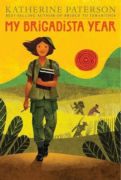
When thirteen-year-old Lora tells her parents that she wants to join Premier Castro’s army of young literacy teachers, her mother screeches to high heaven, and her father roars like a lion. Nora has barely been outside of Havana — why would she throw away her life in a remote shack with no electricity, sleeping on a hammock in somebody’s kitchen? But Nora is stubborn: didn’t her parents teach her to share what she has with someone in need? Surprisingly, Nora’s abuela takes her side, even as she makes Nora promise to come home if things get too hard. But how will Nora know for sure when that time has come?
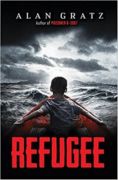
Although separated by continents and decades, Josef, a Jewish boy livng in 1930s Nazi Germany; Isabel, a Cuban girl trying to escape the riots and unrest plaguing her country in 1994; and Mahmoud, a Syrian boy in 2015 whose homeland is torn apart by violence and destruction, embark on harrowing journeys in search of refuge, discovering shocking connections that tie their stories together.
Featured in WOW Review Volume X, Issue 3.
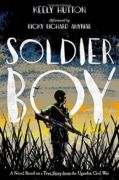
A novel based on the life of Ricky Richard Anywar, who at age fourteen was forced to fight as a soldier in the guerrilla army of notorious Ugandan warlord Joseph Kony.
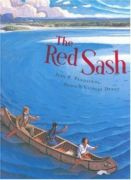
This story centers on a young Metis (mixed blood) boy growing up outside Fort Williams, a major Canadian fur trading post linking northern and central Canada to the North West Trading Company in Montreal. The boy longs to become one of the voyagers, or fur traders, who wear red sashes as they travel the rivers of northern and central Canada. The Red Sash provides readers an authentic picture of life at a fur trading post in the early 1800s.
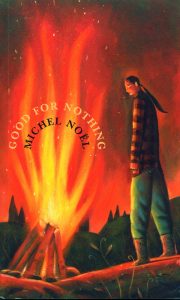 The year is 1959, and fifteen-year-old Nipishish returns to his reserve in northern Quebec after being kicked out of residential school, where the principal tells him he can look forward, like all Native Americans, to a life of drunkenness, prison, and despair. But despite his new freedom, the reserve offers little to a young Métis man. Both his parents are dead, his father Shipu, a respected leader, dying mysteriously at a young age. When Nipishish is sent to a strange town to live with a white family and attend high school, he hopes for the new life the change promises. But despite some bright spots, the adjustments prove overwhelming. Forced to return to his people, he must try to rediscover the old ways, face the officials who find him a threat, and learn the truth about his father’s death.
The year is 1959, and fifteen-year-old Nipishish returns to his reserve in northern Quebec after being kicked out of residential school, where the principal tells him he can look forward, like all Native Americans, to a life of drunkenness, prison, and despair. But despite his new freedom, the reserve offers little to a young Métis man. Both his parents are dead, his father Shipu, a respected leader, dying mysteriously at a young age. When Nipishish is sent to a strange town to live with a white family and attend high school, he hopes for the new life the change promises. But despite some bright spots, the adjustments prove overwhelming. Forced to return to his people, he must try to rediscover the old ways, face the officials who find him a threat, and learn the truth about his father’s death.
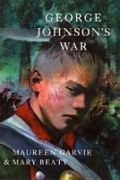
Young George Johnson lives in extraordinary times. His father is Sir William Johnson, one of the richest and most powerful men in colonial New York. His mother is Molly Brant, step-daughter of a Mohawk chief and sister of Iroquois leader Joseph Brant. George spends his early years in a grand mansion. Johnson Hall is a place where Native American culture comfortably mingles with European customs. But George’s life changes as the War for American Independence looms. Peter goes off to fight for the king against the rebel Americans, and the allegiance of the families of the Mohawk Valley are torn. After William Johnson’s death in 1774, Molly and Joseph urge the Iroquois nations to support the Loyalists. As rebel forces take over the valley, George and his family are forced to flee. Molly sends George to boarding school in Montreal, where he spends three miserable years. Finally, he persuades his mother to allow him to join in a last raid on Mohawk Valley. In a riveting climax, he experiences first-hand the inglorious brutality and futility of war, and struggles with what it means to be half Mohawk. And at last he learns the truth about his brother’s fate.
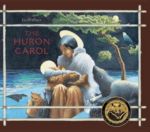
In the early 1600s Father Jean de Brébeuf came to Canada from his native France as a Jesuit missionary. He settled among the Huron, or Ouendat, people in what is now Midland, Ontario. Despite his missionary zeal, Brébeuf was sensitive to the people with whom he lived. He learned their language and he wrote, in Huron, the original version of this famous Christmas carol. He and his fellow priests, called Black Robes, and many of their Huron parishioners were killed in an Iroquois raid in 1649. But Brébeuf’s carol continued to be sung by successive generations of Hurons. Then in 1926, Toronto writer Jesse Edgar Middleton, inspired by Brébeuf, wrote his own version of the carol in English. His are the familiar words we sing today, describing the Huron landscape, flora and fauna in telling the Christmas story.